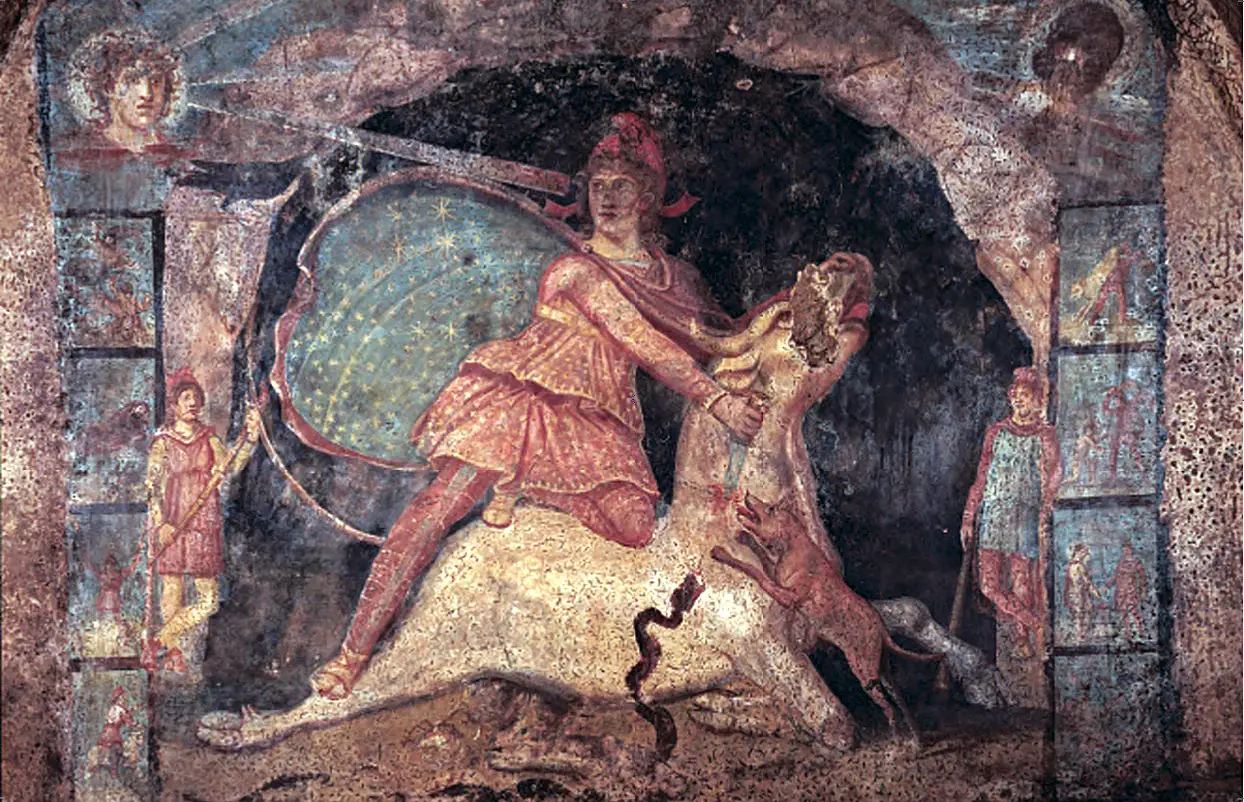(image on the side: affresco representing Mithra killing the bull, XNUMXnd cent. AD, Marino, Italy)
NIn the 50s, the Gnostic documents of Nag Hammadi, found immediately after the war in Egypt, made their entry into the academic world, and the need arose in the field of studies for a reflection on the material available and a rethinking of the categories into which they fell. the so-called mystery cults. The years between the 30s and 40s had already brought new materials and new research hypotheses: studies on pattern or mythical-ritual model inaugurated in England, which still felt the influence of Frazerian comparativism, "by now they were putting the theme of mystery religions in a broader perspective to consider them, one by one, in their ancient roots of national and ethnic religions - Crete, Egypt, Anatolia and the rest of anterior Asia, overcoming the limitation to mystical and soteriological cults of the Hellenistic-Roman age and in particular those relating to divinities of oriental origin»Such as Mithra (Persia), Isis and Osiris (Egypt, Rome), Cybele and Attis (Anatolia), Aphrodite / Astarte and Adonis (Phenicia, Greece) [From: U. Bianchi, The study of mystery religionsin The soteriology of oriental cults in the Roman Empire, Proceedings of the International Colloquium, Rome 24-28 Sept. 1979].



